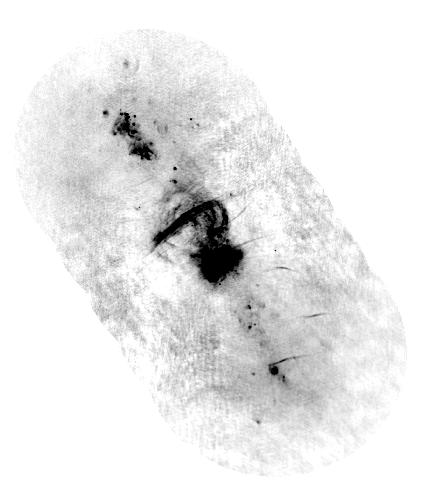

For example, the feedback from massive stars is one of the most energetic processes occuring in the interstellar medium (ISM). Fast stellar winds, supernova explosions and powerful stellar ionizing radiation are responsible for the erosion, heating, and ejection of the ISM, often in explosive outflows from galactic nuclear regions.An examination of such energetic processes and subsequent outflows provides valuable insight into the nature of large-scale interactions between the galactic disk and halo, the eventual fate of such gas, and the resulting feeback of the ISM into the intergalactic medium, especially at high redshifts.
At a distance of only 8.0 kpc (~24,000 light years), the center of our Milky Way provides an excellent laboratory for detailed studies of such processes, and a foundation for understanding such processes in other galaxies.
My research interests are focused around understanding the high-energy phenomena in the Galactic Center using the new X-ray database of the Chandra Galactic Center Survey in conjunction with radio (centimeter and millimeter) and near-IR data in order to study (1) the violent interplay between massive stars and the ISM in this region, (2) the relationship of the diffuse X-ray emission and the unique magnetic field configuration in the GC, and (3) the nature of the point-source and X-ray emission in this region. These projects make use of existing and future observations from a variety of telescopes including the Very Large Array (VLA) radio telescope, the Owens Valley Millimeter Array, the 2MASS data base (near-IR), HST/NICMOS (near-IR), and the Chandra X-ray Observatory.